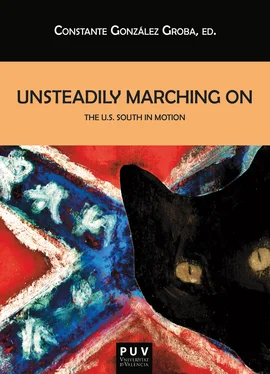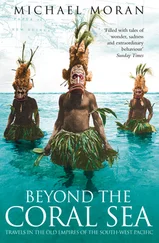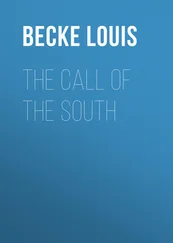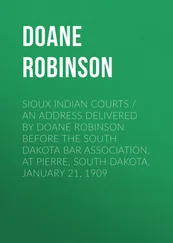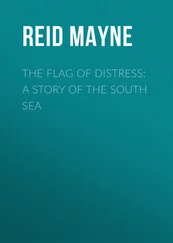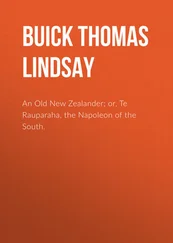It is against this type of thinking that the judge rages, for to him any order ascribed to the universe is purely imaginary. “Even in this world more things exist without our knowledge than with it,” he says, “and the order in creation which you see is that which you put there, like a string in a maze, so that you shall not lose your way” (245). In the judge’s eyes, the only absolute for measuring human endeavor is simple: how long an entity—be it an individual, a group, or a civilization—lives in the war for survival, since survival in the end is all that existence amounts to. All efforts at making—other than those involving war—are thus finally meaningless and misguided, since nothing lasts before the ravages of time. Underscoring the judge’s perspective are the novel’s repeated descriptions of evidence of human presence being quickly erased by the punishing desert environment. After one of the many slaughters, McCarthy writes that “in the days to come the frail black rebuses of blood in those sands would crack and break and drift away so that in the circuit of few suns all trace of the destruction of these people would be erased. The desert wind would salt their ruins and there would be nothing, nor ghost nor scribe, to tell to any pilgrim in his passing how it was that people had lived in this place and in this place died” (174).
The only things that endure, at least from the judge’s perspective, are war and stone. “It makes no difference what men think of war,” the judge says at one point. “War endures. As well ask men what they think of stone. War was always here. Before man was, war waited for him. The ultimate trade awaiting its ultimate practitioner. That is the way it was and will be. That way and not some other way” (248). The judge’s characterization of war as a “trade” suggests that he sees it in terms of craft (in The Stonemason , Papaw identifies his work with stone as his trade), the ultimate and only craft. It is the endurance of stone that makes the judge so threatened by those who work with stone, because their efforts at constructing lasting things, embodying creative forces of making, stand fundamentally opposed to his ideology of war, destruction, and domination.
The judge’s desire to dominate—to be, as he says, suzerain of the world—is seen not only in his exploits with the scalp hunters, but also with his efforts to keep a ledger of all existence, to catalogue everything as a means of control. “Only nature can enslave man,” he explains, “and only when the existence of each last entity is routed out and made to stand naked before him will he be properly suzerain of the earth” (198). “This is my claim,” the judge says moments later, putting his hands on the ground to indicate that he means the entire world, and then continues: “And yet everywhere upon it are pockets of autonomous life. Autonomous. In order for it to be mine nothing must be permitted to occur upon it save by my disposition” (199). To crush all autonomous life explains the judge’s later pursuit of the kid (who amidst the gang’s slaughter has maintained a sliver of humanity, failing to give himself entirely over to the judge’s control) and also his antipathy for workers in stone. Stonemasons defy the judge’s dictatorial imperative, defiantly (at least by the judge’s thinking) recreating the world through their work, guided by their humanity rather than by the judge’s orders. He “who builds in stone seeks to alter the structure of the universe,” the judge observes gazing over the ruins of the Anasazi, “and so it was with these masons however primitive their work may seem to us” (146). “Their spirit is entombed in the stone,” he says of the Anasazi, and the judge wants to keep their spirit, and indeed that of all stoneworkers, buried. When he later finds ancient etchings on a rock wall, the judge first copies many of them into his ledger and then, finding one etching of particular significance, scrapes the design away with a broken chert, “leaving no trace of it only a raw place on the stone where it had been” (173).
Blood Meridian ends with the judge in a bacchanal victory dance, calling out that he will never die, a declaration suggesting (assuming that he is not really the devil and thus eternal) that his ideology of war and domination will persist as long as humans exist. The novel’s epilogue, describing a man digging postholes in a bone-strewn plain, points to that ideology’s continuation far into the twentieth century and beyond. The posthole digger is a very different kind of stoneworker than the mason. Rather than building with stone, the digger strikes the stone, working mechanically and automatically, digging a line of holes “which seems less the pursuit of some continuance than the verification of a principle, a validation of sequence and causality as if each round and perfect hole owed its existence to the one before.” As he works, he “enkindles the stone in the hole with his steel hole by hole striking the fire out of the rock which God has put there” (337). The posthole digger’s line of holes, marking a presumed line of progress, looks forward to a dystopian future shaped by the judge’s ideology of domination, underscored by the mass of people who move like mindless automatons all about the digger. These people step “haltingly in the light like mechanisms whose movements are monitored with escapement and pallet so that they appear restrained by a prudence or reflectiveness which has no inner reality” (337). Moreover, the posthole digger’s enkindling of fire in the stone looks forward to the cracking of the atom and the ultimate destructive weapon, the nuclear bomb. The bone-strewn plain in which he works is a killing field, suggestive of both the slaughters that have already occurred with the opening of the West and the coming conflagrations in the twentieth century (and beyond).
An explicit twentieth-century manifestation of the judge’s ideology of unmaking can be seen in McCarthy’s other grand prophet of destruction, Chigurh (whose very name is a slurred form of “the judge”) from No Country for Old Men . Like the judge, Chigurh is immensely skilled in his murderous craft. When we first see him, the manacled Chigurh performs a skillful and well-practiced maneuver to get his hands from behind his back in order to kill a deputy: “Chigurh squatted and scooted his manacled hands beneath him to the back of his knees. In the same motion he sat and rocked backward and passed the chain under his feet and then stood instantly and effortlessly. If it looked like a thing he’d practiced many times it was” (5). As master craftsman of destruction, Chigurh is skilled at every aspect of his work: at tracking; at breaking into buildings; at killing; at escaping detection; at treating his injuries. In a passage echoing that of the doctor’s treatment of Boyd’s gunshot wound in The Crossing , McCarthy painstakingly describes the expert and careful steps of Chigurh’s treatment of his shot-up leg (163-65). As Chigurh himself underscores several times, not greed but devotion to the principles and codes of his craft is what motivates him. In the words of Carson Wells, his rival, Chigurh “is a peculiar man. You could even say that he has principles. Principles that transcend money or drugs or anything like that” (153). Indeed, Chigurh is nothing if not a man of his word, and whatever he says he will do, he does. No scores remain unsettled. Before shooting Moss’s wife (he told Moss he would kill her if he didn’t return the money and so must carry it out), Chigurh replies to her plea that he doesn’t have to shoot her: “You’re asking that I make myself vulnerable and that I can never do. I have only one way to live. It doesnt allow for special cases” (259).
Poised against Chigurh is Sheriff Bell, an aging lawman who strives to halt the dissolution of traditional society brought about by the murderous craft of Chigurh and similar henchmen. But he is powerless in stopping Chigurh’s murderous pursuits and the widespread dissolution of traditional society that Chigurh’s craft comes to represent. Time and again Bell complains of a world coming undone, a world where the beliefs and structures of traditional life are no longer valued and observed. Speaking of the type of criminal he now faces, Sheriff Bell responds to his listener’s question, “They dont have no respect for the law? That aint half of it. They dont even think about the law” (216). Sheriff Bell’s social commentary characteristically looks both backward to more ordered times and forward to the dark days of coming devastation. “Somewhere out there is a true and living prophet of destruction” (4), Sheriff Bell says at one point, contemplating the carnage wrought by Chigurh, which has transformed the settled order of traditional society into a war zone. Violence erupts everywhere: in city streets, parking lots, highways, businesses, corporate offices, homes, cars, hotels, in the desert. The home front is the war zone. And, as Sheriff Bell comes to realize, with his world’s undoing comes his own undoing as Sheriff. At one point, catching sight of his image in a cup of coffee, the sheriff notes the dark days coming: “The face that lapped and shifted in the dark liquid in the cup seemed an omen of things to come. Things losing shape. Taking you with them” (127).
Читать дальше
